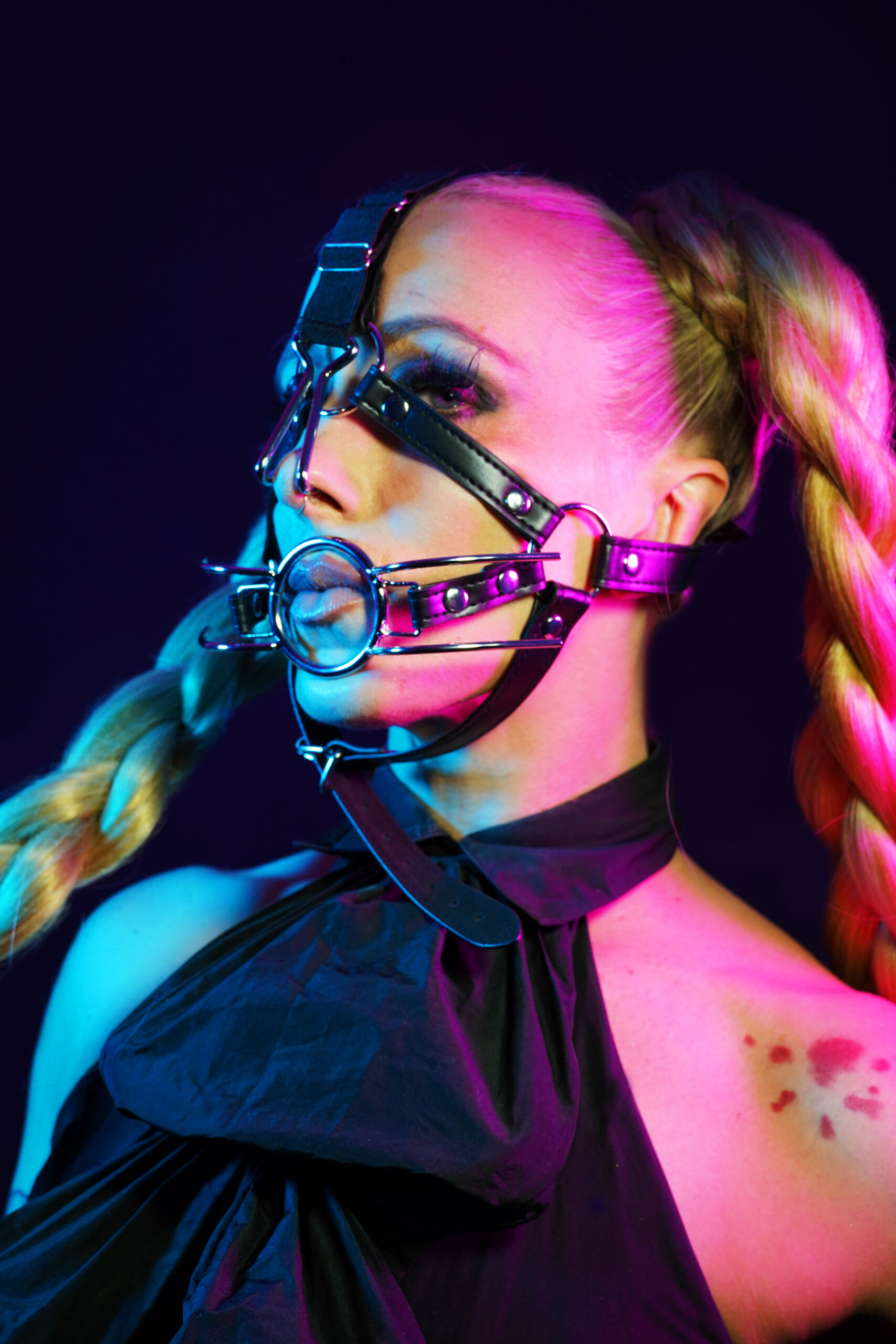Defining Bigender

Bigender individuals identify with two genders, either simultaneously or in different contexts throughout their lives.
This can manifest in various ways, such as feeling partially male and partially female, shifting between these identities, or experiencing a distinct sense of one gender at certain times and another at others.
It’s important to note that bigender is not the same as being bisexual, which refers to sexual orientation.
Bigender identity is about gender, not attraction.
Characteristics and Fluidity of Bigender Experiences
The characteristics of bigender experiences are diverse and fluid, reflecting the unique way each individual navigates their dual gender identities. Some bigender people may feel a sense of balance between two genders, experiencing both equally and consistently. Others might alternate between feeling more male and more female, with shifts occurring spontaneously or in response to certain situations.
Some individuals identify as partially male and partially female simultaneously, holding aspects of both genders within their identity at all times. The way bigender people express their gender can also vary widely, encompassing clothing, hairstyle, name, pronouns, and social interactions.
Misconceptions and Stereotypes
Bigender individuals often face misconceptions and stereotypes due to the complex and multifaceted nature of their gender identities. These misunderstandings can stem from a lack of awareness about gender diversity or societal norms that categorize gender as strictly binary.
- One common misconception is that being bigender is simply a phase or a trend, suggesting that it’s not a genuine or enduring part of someone’s identity.
- Another stereotype is that all bigender people experience their genders as equally balanced and unchanging, overlooking the fluidity and diversity of bigender experiences.
- Some may assume that being bigender automatically means someone is also bisexual or pansexual, conflating gender identity with sexual orientation.
It’s crucial to challenge these misconceptions and foster understanding by recognizing the validity and authenticity of bigender identities.
Acceptance and Recognition in Society
Acceptance and recognition within society are fundamental for the well-being of all individuals, particularly those who identify as bigender. When bigender people feel seen, understood, and affirmed for who they truly are, they can thrive both personally and socially.
However, societal biases and lack of awareness often lead to exclusion and discrimination against bigender individuals. It’s important to create spaces where bigender identities are respected and celebrated, fostering a sense of belonging and safety.

This includes using correct pronouns, validating their gender experiences, and challenging any assumptions or stereotypes they may encounter.
Educating others about gender diversity, including the concept of bigender identity, is crucial in dismantling prejudice and promoting inclusivity. Open conversations and willingness to learn can help bridge understanding and create a more accepting society for all.
By embracing the richness and complexity of human identities, we can build a world where everyone feels valued and empowered to express themselves authentically.
Romantic and Platonic Relationships
Romantic and platonic relationships are fundamental aspects of human connection, offering love, support, intimacy, and companionship. These relationships can take many forms, shaped by individual preferences, cultural norms, and personal experiences.
Romantic relationships often involve feelings of passionate love, physical attraction, and a desire for emotional intimacy. They can range from casual dating to long-term committed partnerships, marriage, and cohabitation.
Platonic relationships, on the other hand, are characterized by deep friendship and mutual respect without romantic or sexual involvement. These bonds are built on shared interests, values, and experiences.
Both romantic and platonic relationships enrich our lives, providing emotional support, a sense of belonging, and opportunities for personal growth. It’s important to remember that the boundaries and expectations within these relationships can vary widely.
Open communication, honesty, and respect are essential for healthy and fulfilling relationships, regardless of their nature.
Navigating Pronouns and Names
Bigender individuals identify with two genders, either simultaneously or in different contexts throughout their lives. This can manifest in various ways, such as feeling partially male and partially female, shifting between these identities, or experiencing a distinct sense of one gender at certain times and another at others.
- One common misconception is that being bigender is simply a phase or a trend, suggesting that it’s not a genuine or enduring part of someone’s identity.
- Another stereotype is that all bigender people experience their genders as equally balanced and unchanging, overlooking the fluidity and diversity of bigender experiences.
- Some may assume that being bigender automatically means someone is also bisexual or pansexual, conflating gender identity with sexual orientation.
It’s crucial to challenge these misconceptions and foster understanding by recognizing the validity and authenticity of bigender identities.
Embracing Both Gender Identities
Bigender individuals identify with two genders, either simultaneously or in different contexts throughout their lives.
This can manifest in various ways, such as feeling partially male and partially female, shifting between these identities, or experiencing a distinct sense of one gender at certain times and another at others.
It’s important to note that bigender is not the same as being bisexual, which refers to sexual orientation.
Bigender identity is about gender, not attraction.
The characteristics of bigender experiences are diverse and fluid, reflecting the unique way each individual navigates their dual gender identities. Some bigender people may feel a sense of balance between two genders, experiencing both equally and consistently. Others might alternate between feeling more male and more female, with shifts occurring spontaneously or in response to certain situations.
Some individuals identify as partially male and partially female simultaneously, holding aspects of both genders within their identity at all times. The way bigender people express their gender can also vary widely, encompassing clothing, hairstyle, name, pronouns, and social interactions.
Bigender individuals often face misconceptions and stereotypes due to the complex and multifaceted nature of their gender identities. These misunderstandings can stem from a lack of awareness about gender diversity or societal norms that categorize gender as strictly binary.
- One common misconception is that being bigender is simply a phase or a trend, suggesting that it’s not a genuine or enduring part of someone’s identity.
- Another stereotype is that all bigender people experience their genders as equally balanced and unchanging, overlooking the fluidity A1 Nail Art and diversity of bigender experiences.
- Some may assume that being bigender automatically means someone is also bisexual or pansexual, conflating gender identity with sexual orientation.

It’s crucial to challenge these misconceptions and foster understanding by recognizing the validity and authenticity of bigender identities.
Acceptance and recognition within society are fundamental for the well-being of all individuals, particularly those who identify as bigender. When bigender people feel seen, understood, and affirmed for who they truly are, they can thrive both personally and socially.
However, societal biases and lack of awareness often lead to exclusion and discrimination against bigender individuals. It’s important to create spaces where bigender identities are respected and celebrated, fostering a sense of belonging and safety.
This includes using correct pronouns, validating their gender experiences, and challenging any assumptions or stereotypes they may encounter.
Educating others about gender diversity, including the concept of bigender identity, is crucial in dismantling prejudice and promoting inclusivity. Open conversations and willingness to learn can help bridge understanding and create a more accepting society for all.
By embracing the richness and complexity of human identities, we can build a world where everyone feels valued and empowered to express themselves authentically.
Finding Community and Support
Bigender individuals identify with two genders, either simultaneously or in different contexts throughout their lives. This can manifest in various ways, such as feeling partially male and partially female, shifting between these identities, or experiencing a distinct sense of one gender at certain times and another at others.
It’s important to note that bigender is not the same as being bisexual, which refers to sexual orientation. Bigender identity is about gender, not attraction.
The characteristics of bigender experiences are diverse and fluid, reflecting the unique way each individual navigates their dual gender identities. Some bigender people may feel a sense of balance between two genders, experiencing both equally and consistently. Others might alternate between feeling more male and more female, with shifts occurring spontaneously or in response to certain situations.
Some individuals identify as partially male and partially female simultaneously, holding aspects of both genders within their identity at all times. The way bigender people express their gender can also vary widely, encompassing clothing, hairstyle, name, pronouns, and social interactions.
Bigender individuals often face misconceptions and stereotypes due to the complex and multifaceted nature of their gender identities. These misunderstandings can stem from a lack of awareness about gender diversity or societal norms that categorize gender as strictly binary.
- One common misconception is that being bigender is simply a phase or a trend, suggesting that it’s not a genuine or enduring part of someone’s identity.
- Another stereotype is that all bigender people experience their genders as equally balanced and unchanging, overlooking the fluidity and diversity of bigender experiences.
- Some may assume that being bigender automatically means someone is also bisexual or pansexual, conflating gender identity with sexual orientation.
It’s crucial to challenge these misconceptions and foster understanding by recognizing the validity and authenticity of bigender identities.
Acceptance and recognition within society are fundamental for the well-being of all individuals, particularly those who identify as bigender. When bigender people feel seen, understood, and affirmed for who they truly are, they can thrive both personally and socially.
Dealing with Discrimination and Prejudice
Bigender individuals experience a unique interplay between two genders throughout their lives. This can manifest in various ways, such as feeling equally male and female, shifting between these identities, or experiencing one gender more strongly at certain times. It’s important to understand that bigender identity is distinct from sexual orientation; it’s about gender, not attraction.
The experiences of bigender individuals are diverse and fluid. Some may feel a sense of balance between their two genders, while others might experience shifts in how they identify based on internal feelings or external circumstances.
- Many misconceptions surround bigender identities.
- One common misconception is that being bigender is a phase or trend, implying it’s not a genuine and enduring part of someone’s identity.
- Another stereotype suggests that all bigender individuals experience their genders as equally balanced and unchanging, overlooking the fluidity and diversity of individual experiences.
It is crucial to challenge these misconceptions and foster understanding. Acceptance and recognition within society are essential for the well-being of all bigender individuals. When they feel seen, understood, and affirmed for who they truly are, they can thrive personally and socially.
Creating inclusive spaces where bigender identities are respected and celebrated is vital.
This includes using correct pronouns, validating their gender experiences, and challenging any assumptions or stereotypes they might encounter.
Educating others about gender diversity, including the concept of being bigender, is crucial in dismantling prejudice and promoting inclusivity. Open conversations and a willingness to learn can bridge understanding and create a more accepting society for all.
Accessing Mental Health Resources
Bigender individuals identify with two genders, either simultaneously or in different contexts throughout their lives. This can manifest in various ways, such as feeling partially male and partially female, shifting between these identities, or experiencing a distinct sense of one gender at certain times and another at others.
It’s important to note that bigender is not the same as being bisexual, which refers to sexual orientation. Bigender identity is about gender, not attraction.
The characteristics of bigender experiences are diverse and fluid, reflecting the unique way each individual navigates their dual gender identities. Some bigender people may feel a sense of balance between two genders, experiencing both equally and consistently. Others might alternate between feeling more male and more female, with shifts occurring spontaneously or in response to certain situations.
Some individuals identify as partially male and partially female simultaneously, holding aspects of both genders within their identity at all times. The way bigender people express their gender can also vary widely, encompassing clothing, hairstyle, name, pronouns, and social interactions.
Bigender individuals often face misconceptions and stereotypes due to the complex and multifaceted nature of their gender identities. These misunderstandings can stem from a lack of awareness about gender diversity or societal norms that categorize gender as strictly binary.
- One common misconception is that being bigender is simply a phase or a trend, suggesting that it’s not a genuine or enduring part of someone’s identity.
- Another stereotype is that all bigender people experience their genders as equally balanced and unchanging, overlooking the fluidity and diversity of bigender experiences.
- Some may assume that being bigender automatically means someone is also bisexual or pansexual, conflating gender identity with sexual orientation.
It’s crucial to challenge these misconceptions and foster understanding by recognizing the validity and authenticity of bigender identities.
Acceptance and recognition within society are fundamental for the well-being of all individuals, particularly those who identify as bigender. When bigender people feel seen, understood, and affirmed for who they truly are, they can thrive both personally and socially.
how to make him cum fast
Arielle Likes to Cook
- What Makes Vista Edge Vape Different From The Competition? - May 28, 2025
- Light Eyes Ultra – Dark Circles Treatment Near Haslemere, Surrey - May 28, 2025
- Thc Seltzer In Montana MT - May 28, 2025
